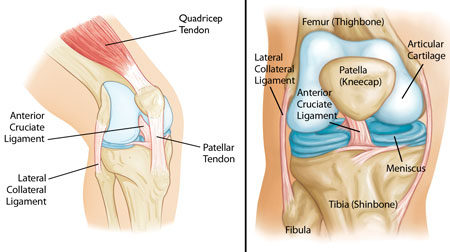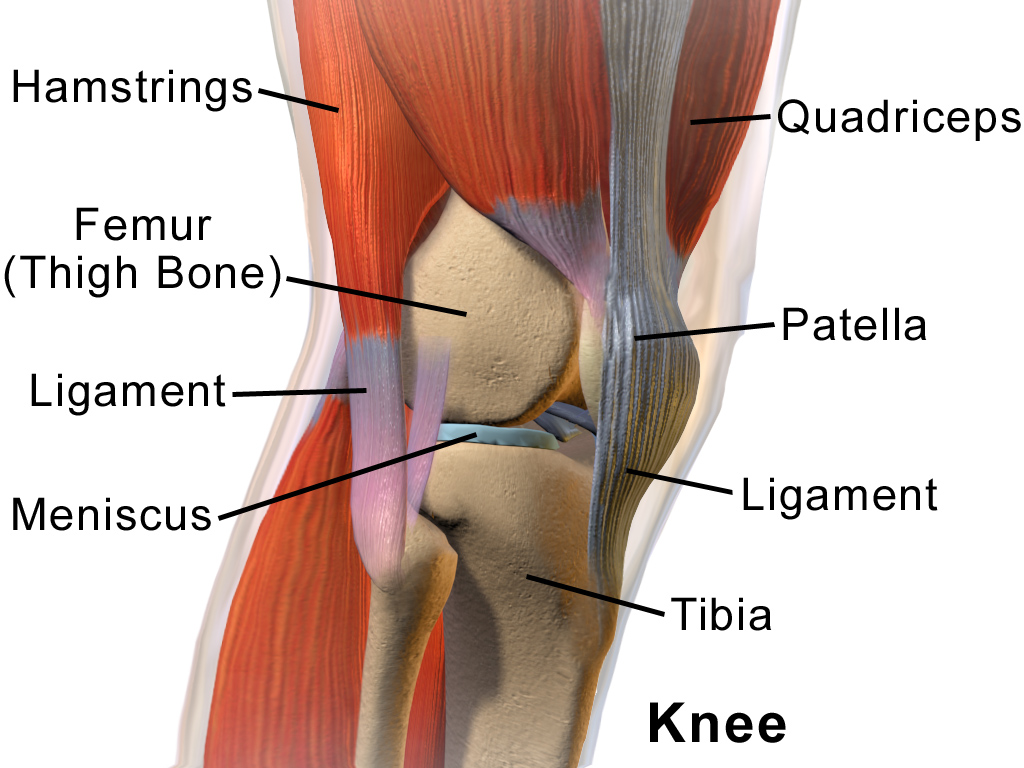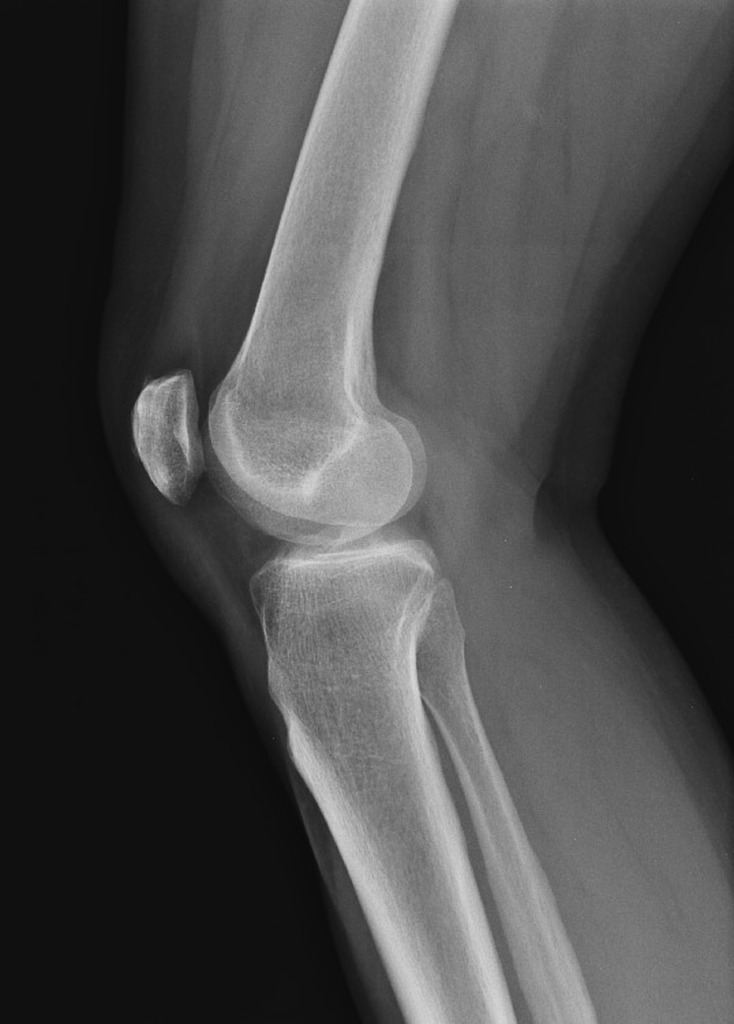
Knee pain is a very frequent concern for many patients. There are many different causes for knee pain, many of which do not require patients to see a doctor.
First of all, please know that you should see a doctor immediately if:
- You have a sudden, severe injury to your knee and you are concerned concerned a bone may be broken, or that you have completely torn a ligament.
- If your knee is red or warm.
Otherwise, if you have a nagging knee injury over the last few days, weeks, or even months, then this article may provide you with helpful information.

COMMON CAUSES OF KNEE PAIN:
- Osteoarthritis – this is due to years ‘wear and tear’ on the joint and very common as people get older. This may affect both knees or perhaps just one side more than the other. The pain usually starts gradually and progresses or persists over months or years. Here is a handout about osteoarthritis including all the things you can do to improve your pain and function.
- Cartilage Tears or Meniscal tears – There are types of soft, cushiony, tissue that covers the bone surface in joints and provide cushioning. The surfaces are usually smooth and slippery to allow the bones to slide back and forth across other when we move. It is common that over the years, we can get a small tear in the cartilage or meniscus, even without a specific injury. This causes pain and sometimes locking in the joint. The good news is that these types of injuries usually heal all by themselves. It just may take several weeks to months. Years ago, surgeons used to operate on knees to try to repair or “clean out” the knee joint. HOWEVER, more recent research suggests that these surgeries do not really help in the long run. Patients generally improve just as well without surgery (and avoiding the risks that come with surgery). Click HERE or HERE for more information.
- Ligament or Tendon Strains – As above, you have had a sudden, significant injury and have severe pain, swelling, bruising, or joint instability, then that might mean you have a “complete” ligament tear. If this is the case, please see a doctor immediately. However, more commonly, patients may experience a mild to moderate nagging pain over several weeks, without or without a specific injury. Most of these do not need to be seen by a doctor because it will general settle with time and the treatment suggestions below.
- Muscle Strains – Sometimes, pain felt in the knee does not actually caused by the knee joint. Instead, it can be due to strains of the muscles or tendons in the lower thigh or upper calf, for instance. These do not need to be seen by a doctor because it will general settle with time and the treatment suggestions below.
- Bursitis – A “bursa” is a fluid-filled sack that provides cushioning and lubrication around the joint. Sometimes, these bursas can become inflamed, swollen, or painful from “wear and tear”, repetitive strains, or even banging the knee. When the bursa becomes inflamed, it is called “bursitis.” As above, if the bursa or knee is red or warm, then you should see a doctor. However, more commonly the bursa can become swollen or painful without being red or warm and does not need to be seen by a doctor because it will general settle with time and the treatment suggestions below. Here are some helpful articles on bursitis: HERE and HERE.
- Baker’s Cyst – A Baker’s cyst is a fluid-filled cyst that causes a bulge and a feeling of tightness behind your knee. The pain can get worse when you fully bend or extend your knee or when you’re active. A Baker’s cyst is usually the result of a problem with your knee joint, such as arthritis or a cartilage tear (see above for these conditions). Both conditions can cause your knee to produce too much fluid, which can lead to a Baker’s cyst. These do not need to be seen by a doctor because it will general settle with time and the treatment suggestions below.
- Patellofemoral Syndrome – This is typically pain in the front or upper front of the knee where the “knee cap” (patella) glides against bone in the lower thigh as the knee bends back and forth. Again, this is a type of “wear and tear” or repetitive strain injury. Click HERE or HERE to see some helpful handouts on exercises you can do to improve this condition. This does not need to be seen by a doctor because it will general settle with time and the treatment suggestions below, especially seeing a physiotherapist.

WHAT CAN YOU DO?
Regardless of the specific cause, the same general advice applies to all of these conditions. These are all the things you can do without needing to see a doctor:
- REST – avoid activities that aggravate that pain. That said, it is important stay as active as tolerated as activity generally improves recovery. In osteoarthritis, for example, exercise and activity can improve pain.
- ICE – Try applying cold packs or ice periodically, especially if the pain is new. This can help decrease inflammation levels.
- TYLENOL (acetaminophen) – A pain reliever. It is generally safe for most people to take as long as you do not have liver problems or combine it with a lot of alcohol intake. Click HERE for more information.
- ANTI-INFLAMMATORIES – There medications treat pain and inflammation. Examples of anti-inflammatory medications are: “Advil”, “Motrin”, “ibuprofen”, “naproxen,” “Aleve,” “Celebrex,” “Arthrotec,” or “Meloxicam.” You should avoid these medications if you have kidney problems, bleeding from your stomach or bowels, or if you are taking certain blood pressure medications. Click HERE for more information.
- VOLTAREN Cream or Gel – this is a type of anti-inflammatory cream or gel that you can rub on your painful knee. Even if you cannot take anti-inflammatory pills, this is generally safe and minimal side effects. Some people find this very helpful, but some people do not. This is not covered by drug plans, so no prescription from a doctor is required. It is available over-the-counter at pharmacies.
- PHYSIOTHERAPY – Think of a physiotherapist as a “muscle and joint expert.” They can diagnose your problem, provide treatment, and give you advice to do at home. You do not need a referral from a doctor to see physiotherapy. You can call the physiotherapist directly and book yourself. If you need a letter from your doctor to get physiotherapy covered through your private health insurance, then you can usually request from our office without having to come in for a visit. (Note: these private insurance letters are not covered by OHIP, so a fee may apply). If you are over 65 years of age, then OHIP does cover physiotherapy at specific locations and no fee is required for these referrals.
- KNEE BRACE – many people find knee braces helpful. These can range from simple “soft braces” all the way up to customized braces from companies who sell them. Some people even find a simple tensor bandage (available at any pharmacy) wrapped around the knee can provide relief. If you need a letter from your doctor to get the knee brace covered through your private health insurance, then you can usually request from our office without having to come in for a visit. (Note: these private insurance letters are not covered by OHIP, so a fee may apply). You may require an x-ray to help determine the best type of brace for you. The x-ray can sometimes be ordered without an actual visit to your doctor.
- OTHER CHRONIC PAIN OPTIONS – Click HERE for even more options.

DO YOU NEED AN X-RAY or MRI?
The majority of people with knee pain do not require any x-rays or MRIs.
- X-rays only show bones. Everyone over the age of 40 will probably have some degree of arthritis show up on an x-ray, even if it is not the arthritis causing the person’s pain.
- Plus, the severity of arthritis on an x-ray does not necessarily correlate with severity of a person’s pain. Some people may have only “mild” arthritis on a x-ray, but they have severe pain. Some people with “severe” arthritis on an x-ray may not have much pain at all!
- For these reasons, xrays may be misleading.
- MRIs are used to look at the knee cartilage or ligaments. However, similar to x-rays above, the findings on an MRI may be purely coincidental.
- What about an ultrasound? As confirmed with specialists, ultrasounds are not useful for looking at the knee joint.
In summary, most of the time, the result of an x-ray or MRI will not change the recommended advice. As above, regardless of the specific cause, the general treatments are all the same.
WHEN IS AN X-RAY or MRI REQUIRED?
- If you have a sudden, severe injury and need to rule out a fracture, then an x-ray is needed.
- If you have a sudden severe injury and need to rule out a complete ligament tear, then an MRI is needed.
- You may need an x-ray if you are getting a knee brace to help determine the best type of brace for you. This can sometimes be ordered without an actual visit to your doctor.
- If you are considering a knee surgery, the surgeon will require x-rays to assess your knees. NOTE: given all of the above information, this is why if your pain and symptoms are not bad enough to consider a surgery, then you usually do not need an x-ray nor MRI because all of the other treatments are usually the same regardless of what an xray or MRI shows.

REASONS TO SEE A DOCTOR:
- Major, sudden injury and your knee has severe pain, swelling, bruising, or feels unstable (i.e. there may be a bone fracture or complete ligament tear.
- Your knee is red or warm (need to rule out things like infection, gout, or rheumatoid arthritis).
- Fever associated with the knee pain (need to rule out infection).
- You have already tried all of the above advice and are considering a steroid injection to be done by your doctor.
- You have already tried all of the above and would like to consider having surgery on your knee.
- Any other concerns or symptoms that are not covered in this article.
